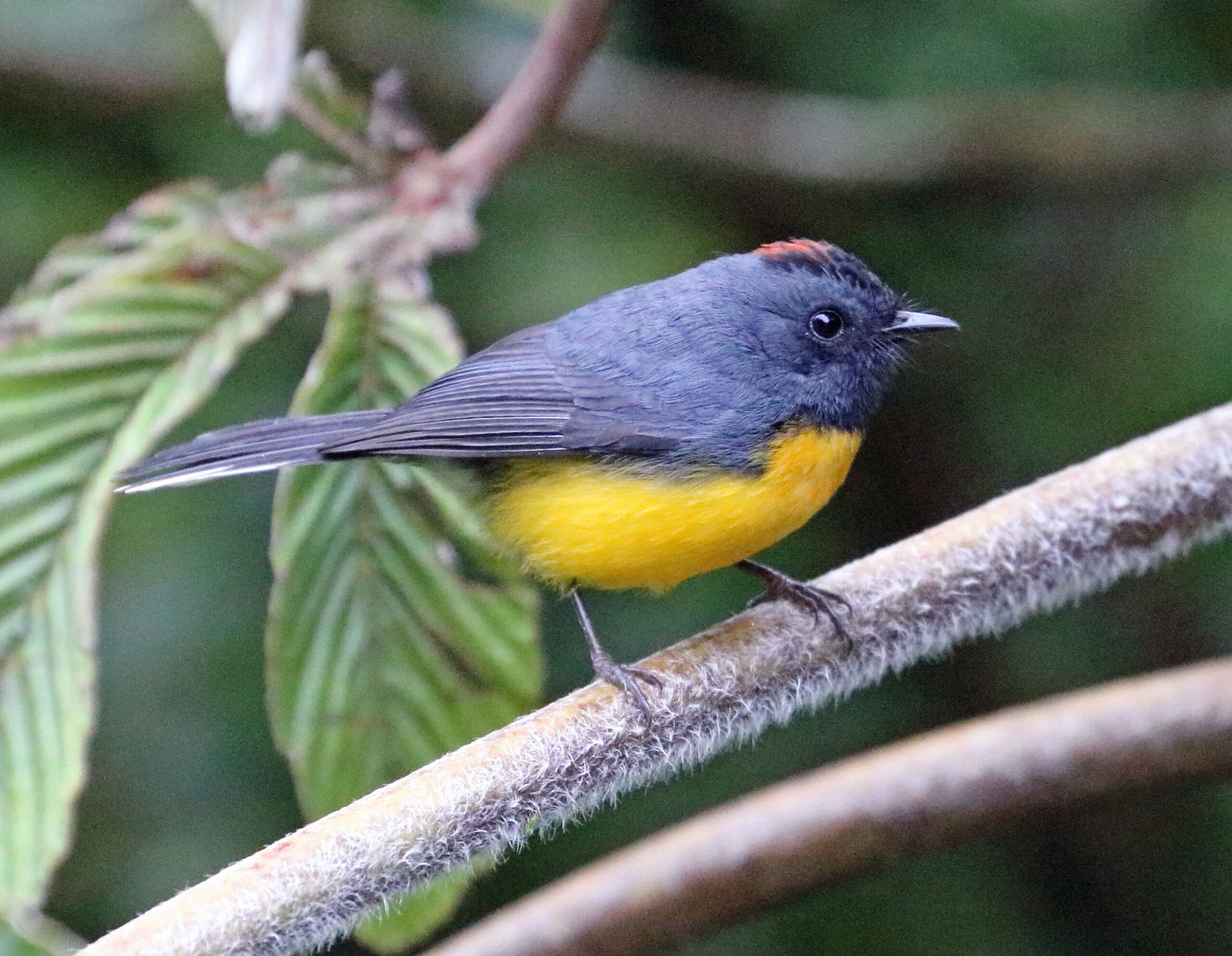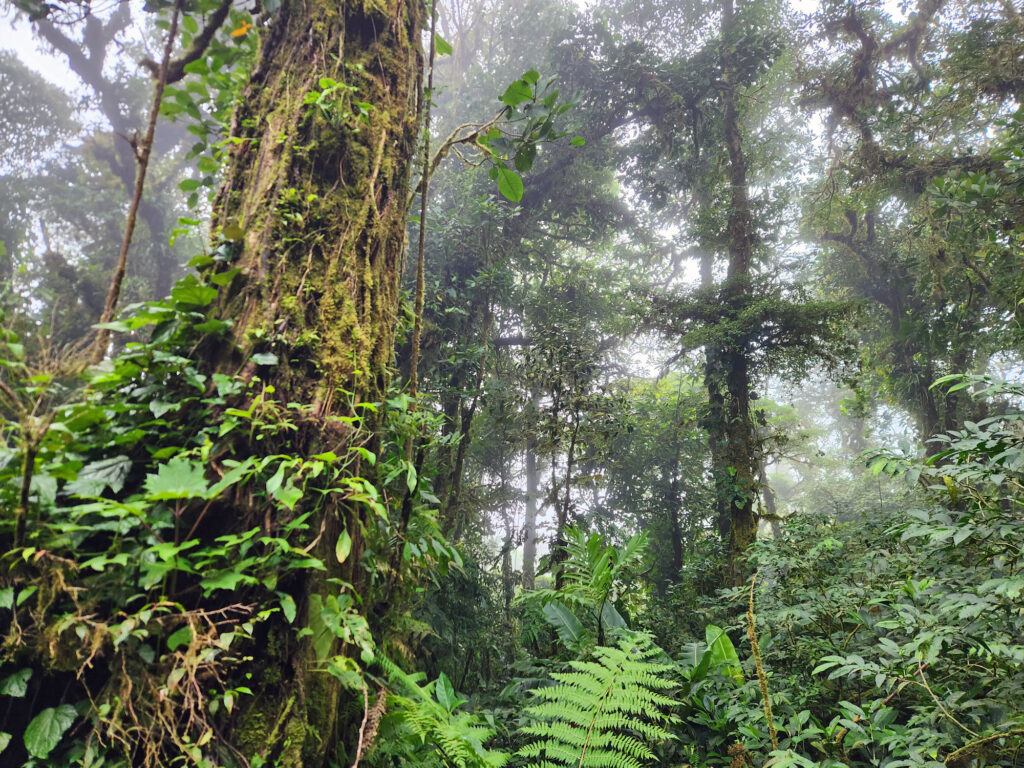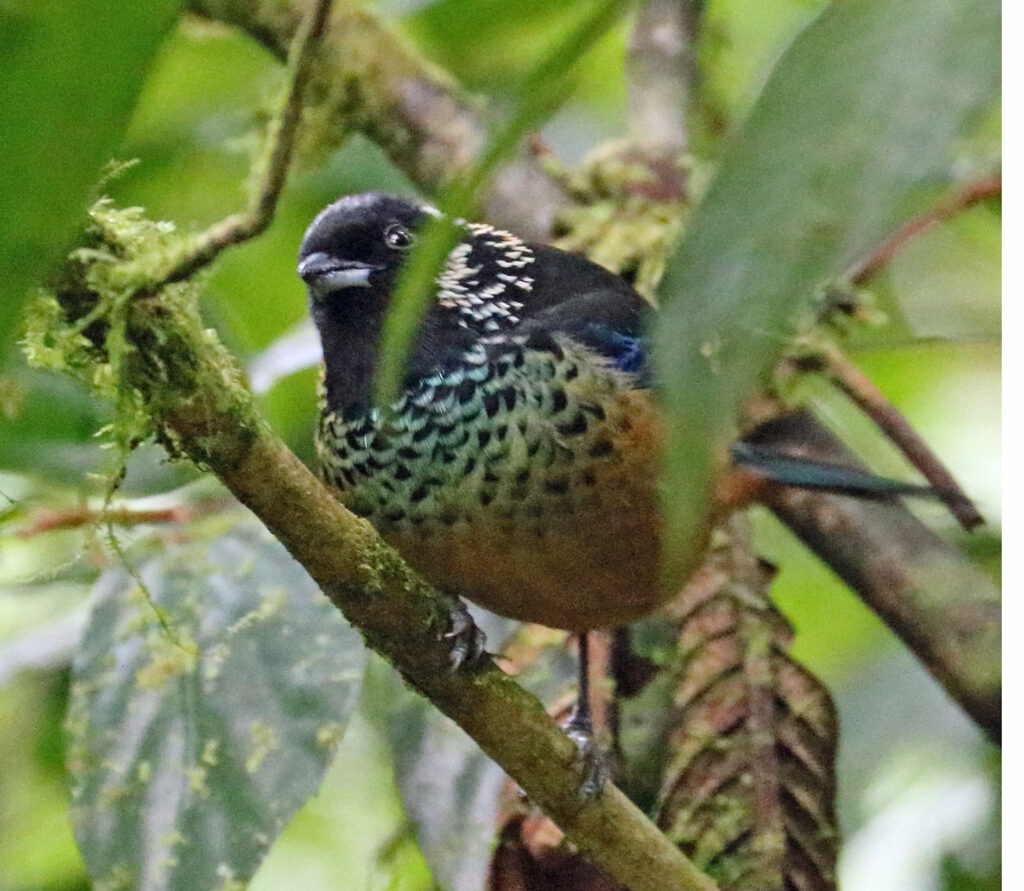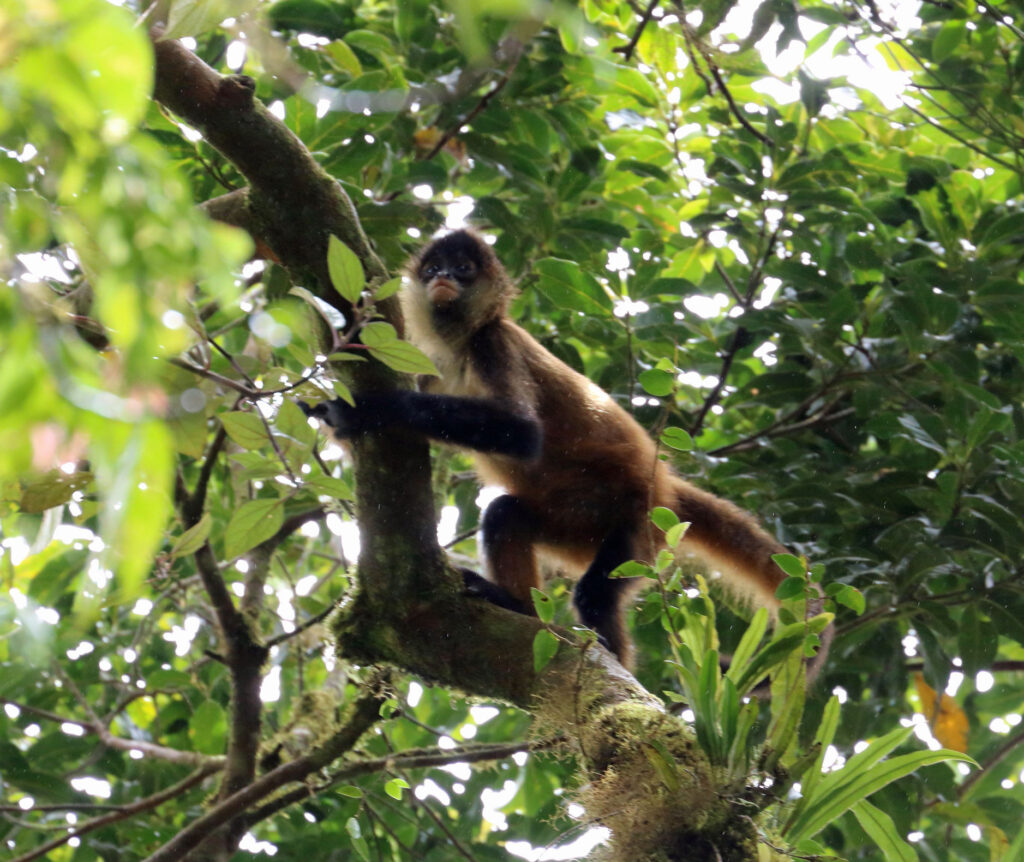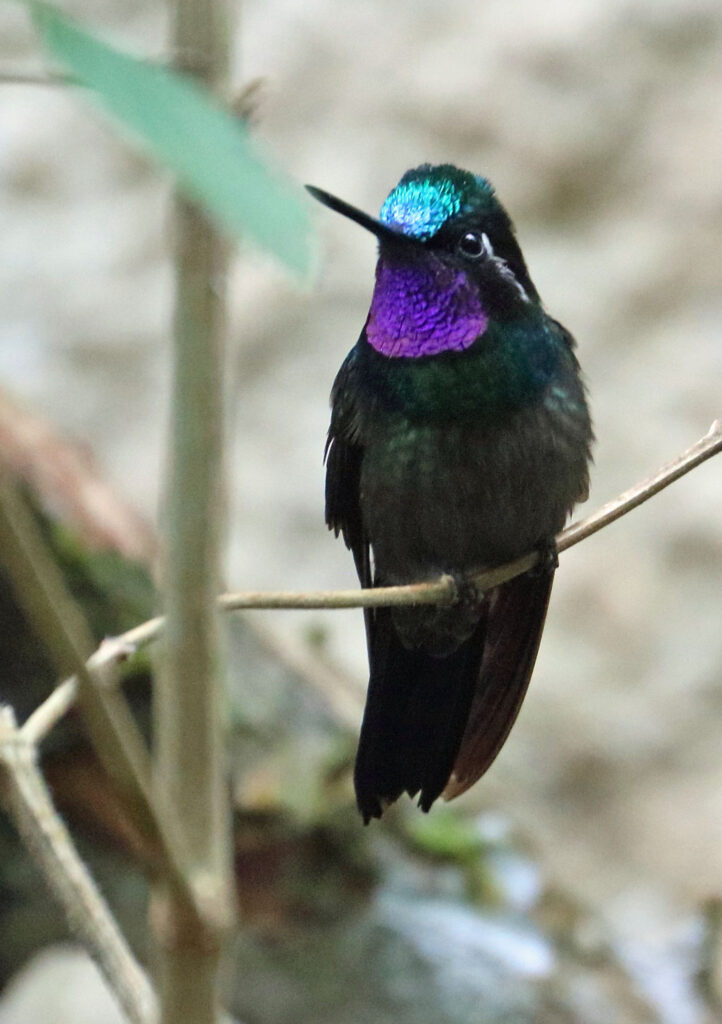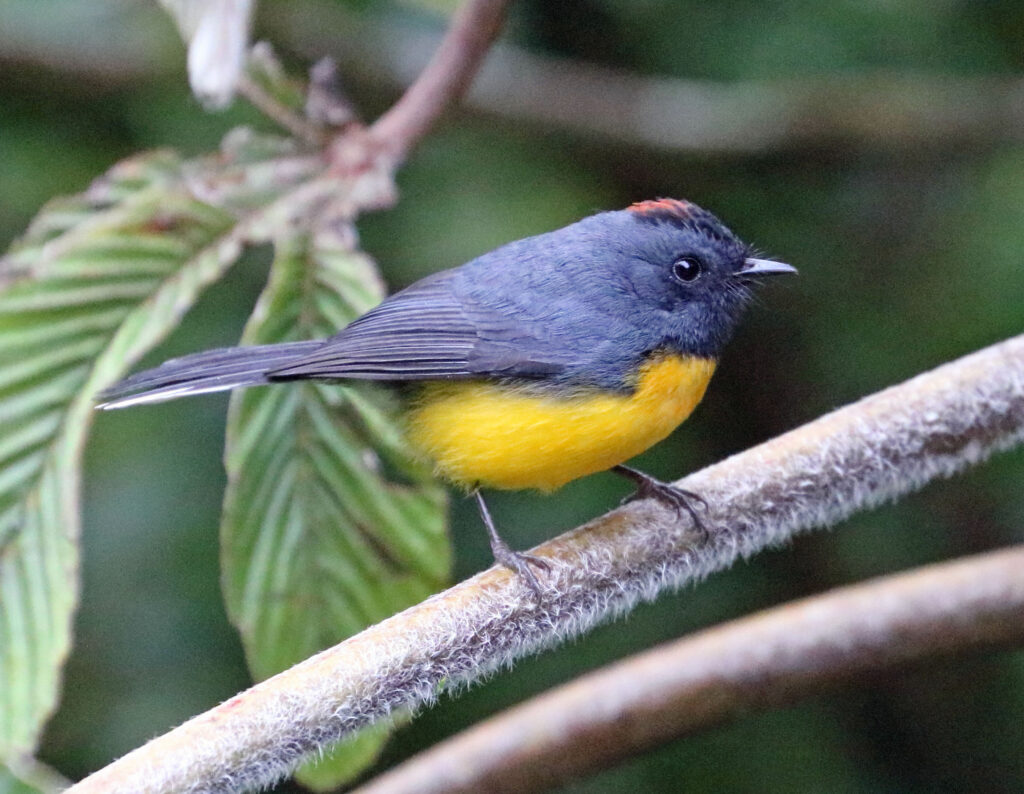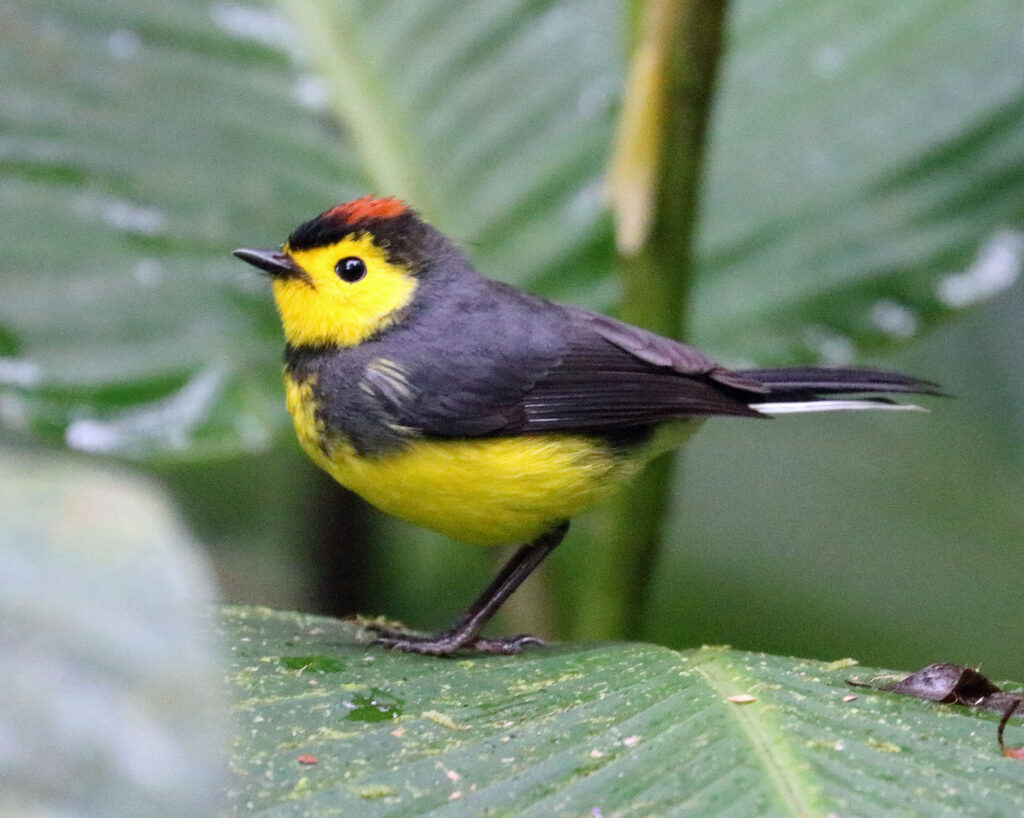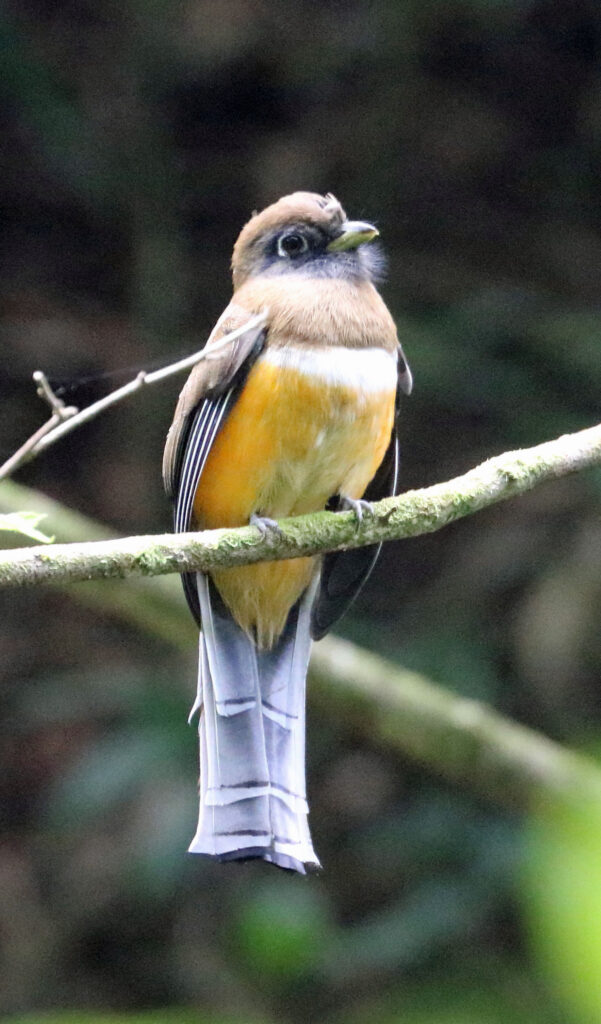Not many of us have the resources to bird outside of our own regions, and if you are part of that large club, you’re in luck. Braden is spending the spring semester of his junior year studying abroad in Costa Rica. He has 16 full weekends to work with and it’s no surprise that birding is on the agenda for every one of them. Here is his latest report—to a place that is not only a wonderful birding destination, but a model of sustainable agriculture. Enjoy!
I arrived at La Reserva El Copal just as the sun dipped behind the rainforest-covered foothills, my clothes soaked with sweat and every part of my body tired from the four bus rides and two-hour walk it had taken to get to one of Costa Rica’s best birding locations. My weekends in Monteverde and Jaco had been eventful and fun, but I was in need of some solo birding time, and so four days earlier I had made a reservation for this inexpensive, out-of-the-way property sitting on the lower slopes of the Cordillera de Talamanca. Patricia and Beto, the couple that ran the reserve, warmly welcomed me as darkness fell, showing me to my room and then to the dining hall for a dinner by candlelight. As I stared at the photos of rare and colorful hummingbirds on the walls, I realized that I was the only guest staying here for the night. Patricia served my rice and beans and said that she and Beto usually lived in Pejibaye, the town the final bus had dropped me off in, and only came up here when guests arrived, which wasn’t particularly frequently in January and February. This surprised me, given El Copal’s location and the high number of desirable bird species reported from here.
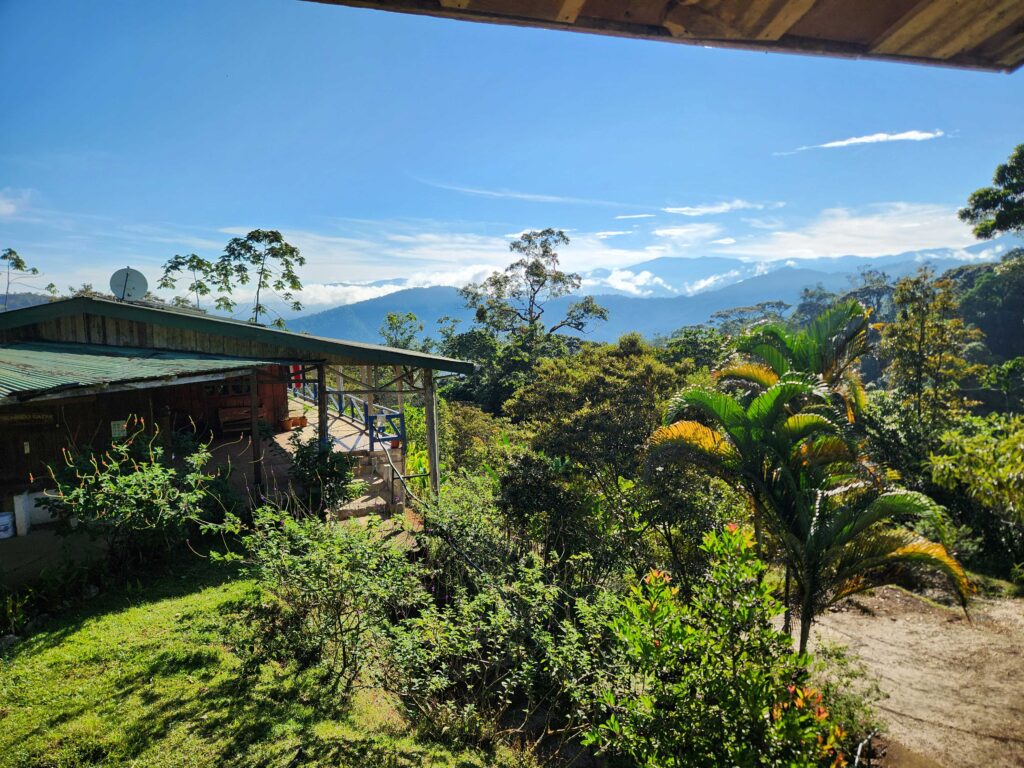
The next morning I arose at dawn, grabbed my binoculars and camera and headed off into the property as the trees began to glow with increasing sunlight. Almost immediately after stepping outside, a small, dark hummingbird buzzed by me, stopping to feed at one of the many flower bushes adorning the property. Despite the fact that it was still dark, I could clearly see the brilliant white cap for which the bird was named—Snowcap, which, in the weeks leading up to my trip to Costa Rica, had quickly risen up the ranks as one of my most-wanted birds. Rare denizens of the Caribbean slope, there were very few places in the country where these birds were reliable. El Copal was one of them, and I ended up seeing at least half a dozen of them during my stay here. The tiny, fairy-like hummingbirds eliminated any doubt I had about making this trip!
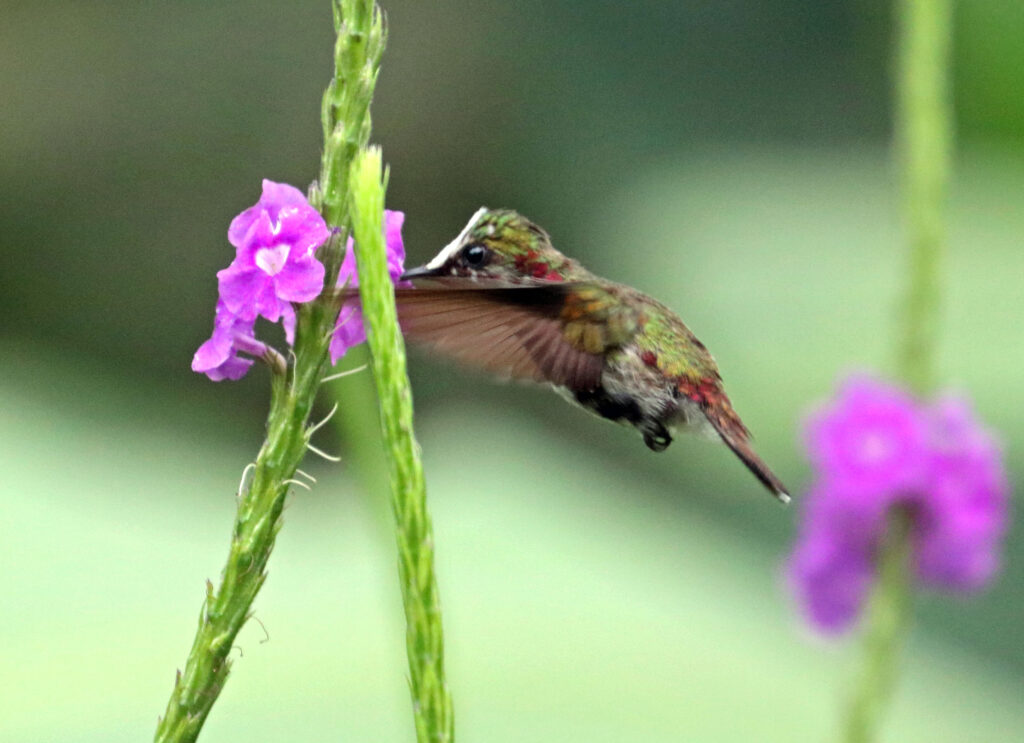
El Copal is full of rare birds. Back in the late 90s, the land now holding El Copal had been purchased by several families for agriculture. Instead of developing the rainforest, however, they decided to first establish a form of sustainable agriculture, then open it up for ecotourism, preserving much of the primary forest on the property. Now, some of Costa Rica’s most sought-after birds (and other animals) thrive here, thanks to the decision of those local farmers. This includes the Snowcap and a variety of other hummingbirds, as well as my #1 Target Bird for the whole country: Yellow-eared Toucanet. Of the six toucan species found in the country, this toucanet is the rarest, only found in middle elevation-rainforest on the Caribbean slope. El Copal seemed to be one of the best places to find them in the whole world, and I had my fingers crossed as I headed up the steep trails leading into the reserve.
The morning was…complicated. I heard a whole lot of birdsong, but very few of the singers actually presented themselves for good looks. Merlin (the bird identification app developed by the Cornell Lab of Ornithology) was only so helpful, as there are significantly fewer recordings of Latin American species than North American species. Bird sounds that the app identified for me included Bright-rumped Attila, Broad-billed Motmot, and Northern Schiffornis, the latter of which is an entirely brown bird with one of the most entertaining whistling songs I’ve ever heard. Despite my frustration at not being able to see many of the birds hidden in the foliage, I did get eyes on a few. I spotted both a Collared Aracari and a Keel-billed Toucan, two species of toucans quite common in this type of rainforest. And I did lay eyes on several large, mixed flocks of tanagers, colorful birds that traverse the forest in search of fruit. The species I picked out at the tops of trees included Silver-throated, Emerald, Speckled, Golden-hooded, Hepatic, Summer, Scarlet-rumped, Tawny-crested, Black-and-yellow, and Bay-headed Tanagers. I also got to watch a family group of coatis quietly foraging on the trail ahead of me. They scattered when I stepped on a branch by accident.
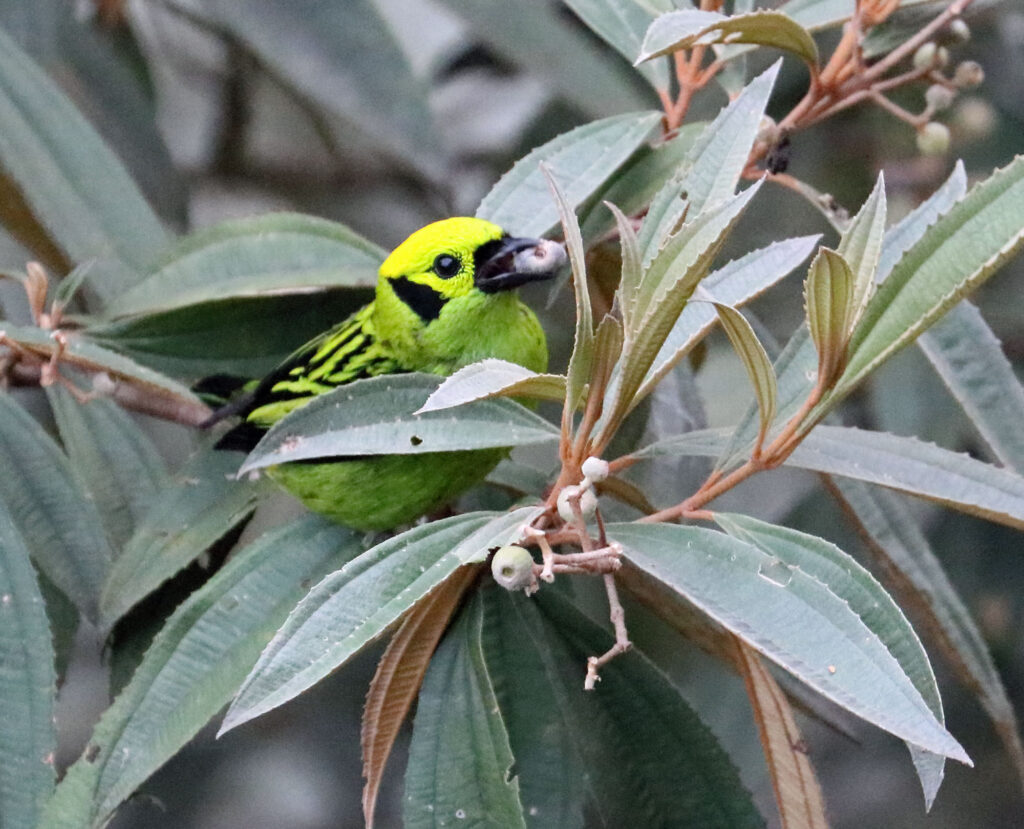
I returned to the main property for breakfast, then headed off on a different trail, this one leading down towards a stream. I found a Buff-rumped Warbler foraging on the rocks in the water, and peered around tree ferns and buttressed trees to try and glimpse the calls I was hearing. This trail also took a left turn and then continued up the mountain, and further up I spotted Scarlet-rumped Caciques and Chestnut-headed Oropendolas, big grackle-like birds making crazy calls. As I rounded a corner, a shiny green bird with a long bill alighted on a branch in front of me. The bird’s beak was longer and thinner than that of a kingfisher, and it had a warm, orange belly complementing its shimmering, green back: a Rufous-tailed Jacamar! Few birds had given me such a good look that morning, and I stood there for several minutes, watching the bird peer down at me curiously. A few minutes later, a large Ornate Hawk-Eagle soared through a gap in the trees, and my attitude began to improve—the birds were showing themselves! On the way down, I heard a rising and falling song, signifying the presence of an antbird. I poked around a little, eventually getting eyes on a Bicolored Antbird overturning leaves! This species, like many other antbirds, are ant-following obligates, meaning that they depend on army ants to find food. As large swarms of army ants rush through the rainforest, they stir up and scare hundreds of other insects, who leap out of the way, straight into the waiting mouths of antbirds, antwrens, woodcreepers and a variety of other birds that just follow the ants around. Ground-cuckoos, one of the most enigmatic groups of birds, also belong to this ant-following group.
While I didn’t actually lay eyes on any army ants, the antbirds signified that there must have been some nearby. The leafcutter ants, meanwhile, were everywhere. Their trails ran alongside and crisscrossed the walking trails, and I always had to keep an eye on the ground so I wouldn’t step on any.

When I arrived back at the lodge for lunch, another birder who had just arrived pointed out another Ornate Hawk-Eagle, this one perched up on a distant snag. As I peered at the bird through his spotting scope, he introduced himself as Carlos, a local also living in Pejibaye. Carlos is an English teacher and regularly visits El Copal during weekends to search for the hundreds of bird species found here. I told him that I hailed from the University of Maine, and spoke of my hunt for the Yellow-eared Toucanet. He looked at his watch. “I’ve got a few more hours…do you want to hike the trails and look for the toucanet together?” So, after a quick lunch, we headed back up the mountain in search of my target.
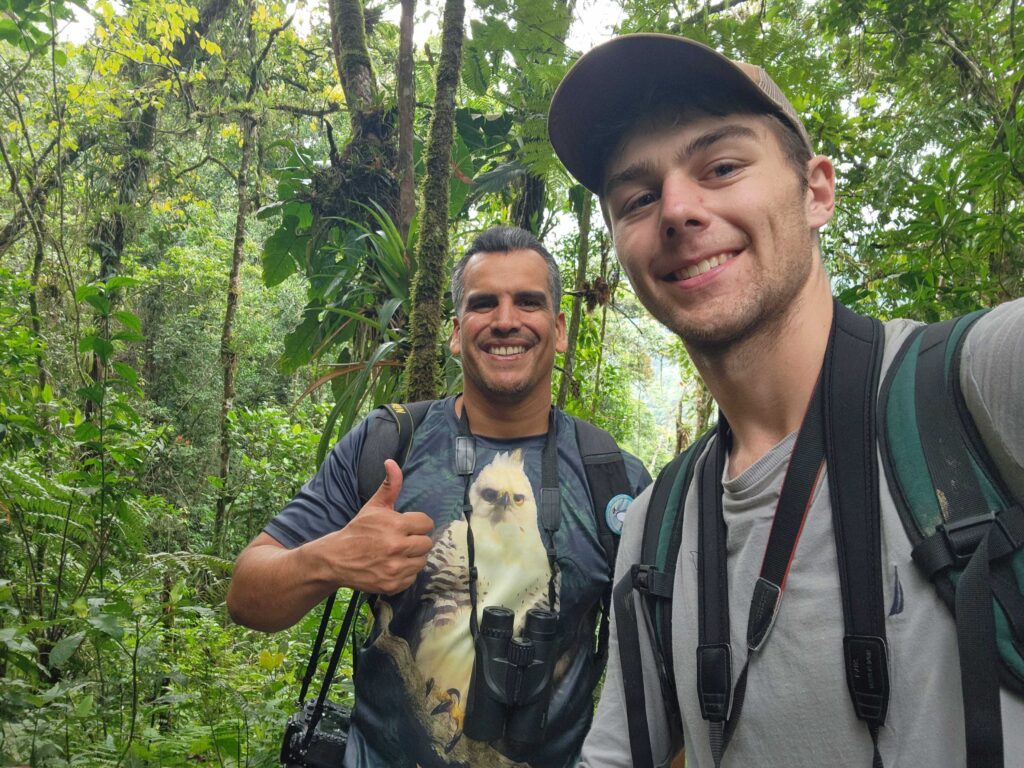
Carlos’s knowledge of the birds of the area was impressive. For one, he could identify many of the calls I’d felt hopeless about earlier, which included more species of antbirds, Collared Trogon, and several species of wrens. He also knew exactly where all the birds hung out, at one spot pointing down the side of the cliff to a White-crowned Manakin, a tiny black bird with a white cap, sitting in a bush fifty meters away. “He’s always here.”
As we gained altitude, I could begin to see the influence of cloud forest. Slightly different species lived here, and the plant composition looked different, too. One thing in particular made us realize we’d entered a higher-altitude area, however. “Toucanet!” Carlos yelled, pointing to a large, bromeliad-covered tree rising from the slope. I held my binoculars up to see, not my target bird, but an entirely green toucan: a Northern Emerald Toucanet! We tried in vain to photograph the species but neither of our cameras would cooperate, although it will be a long time before I forgot what it felt like to see that bird. This species is much more common at higher altitudes, and it was the first time Carlos had ever seen one on the property! It was, of course, a lifer (a bird I’ve never seen before) for me. As if the Emerald Toucanet wasn’t enough, as we rounded the corner, Carlos stopped me again.
Slowly and quietly, he pointed out a large-ish bird sitting about twenty meters in front of us, up in a tree. The bird was black, with a chestnut cap complementing the blue and green skin around its eye. Its long yellow and black beak, combined with green wings, orange flanks and red rump, identified it as the bird I’d been searching for: a female (hembra in Spanish) Yellow-eared Toucanet. I just about lost my mind, holding my camera up slowly with shaky hands. Never had I actually believed I would lay eyes on one, and yet, here one was, right in front of us. Then, the male appeared, sporting that yellow ear the species was named after.
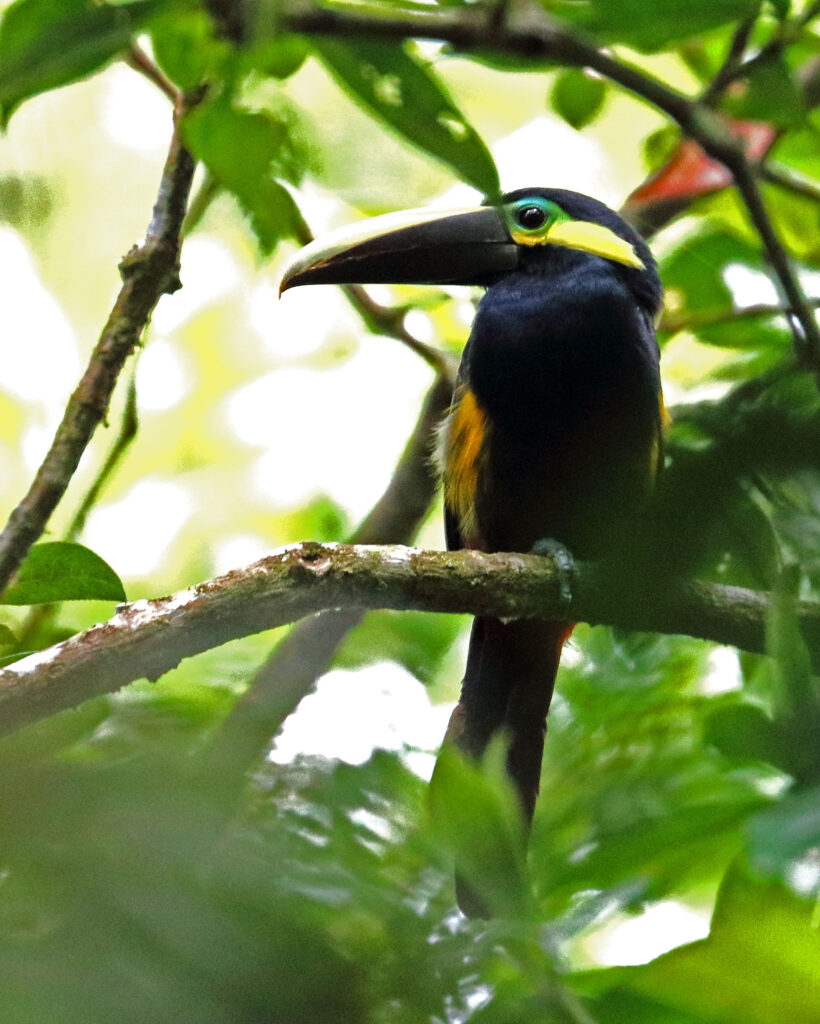
We enjoyed the birds for about ten minutes, then headed off, as Carlos had to get back home. I thanked him profusely for sharing these amazing birds with me, and we exchanged contact information. Then, I spent the rest of the evening looking at and deleting photos and enjoying the tanagers feeding in the fruiting trees in front of the rooms. Before I went to bed, I spotted several of what I believe to be bioluminescent beetles flying through the rainforest (though they may have been fireflies. I’m not good with bugs.).

In total, I spotted 117 species at El Copal over the weekend, including a few the next morning like King Vulture, Gartered Trogon and Green Thorntail. La Reserva El Copal could be described as nothing short of magical. Are there places like this that you’ve always wanted to visit? A mountain range full of endemic plants? A reserve dedicated to protecting endangered amphibians? Perhaps your bucket list is topped with places like the Serengeti, the Great Barrier Reef, the ancient castles of Ireland? If you are, the Gilman Scholarship can help you get to these places! Studying abroad is an experience that every student should have the opportunity to have, and the Gilman helps put this philosophy into practice. The money they awarded me has helped me afford to go on adventures like this, the rain-forested foothills of Costa Rica, and they can help you too! So please, if you’re considering studying abroad (which you should be), apply to the Gilman!


